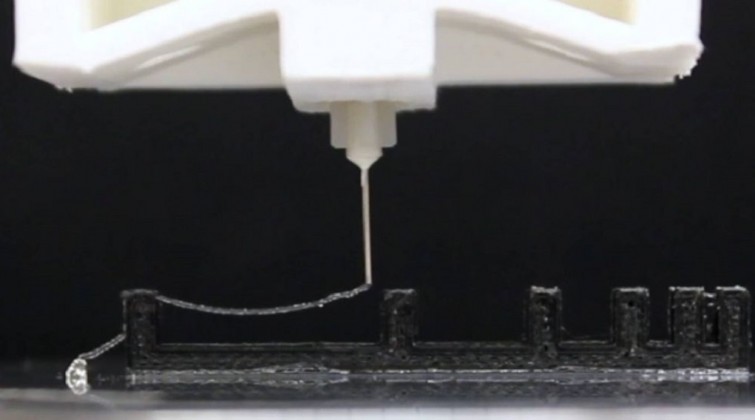The 'living' material that constructs buildings that repair themselves

Researchers at Northeastern University in Boston have created a new 3D printing material composed entirely of a genetically modified version of E. coli bacteria. This material, according to its creators, has countless applications, but perhaps the most striking is that it can be used for the construction of buildings – both here and on other planets – that repair themselves.
E.coli is a bacterium that usually lives in the intestines of warm-blooded animals and some of its variants can cause severe diarrhea and vomiting if we expose them to it. But a genetic modification of this bacterium, as the Team of American researchers has shown, has turned out to be ideal as an 'ink' to manufacture all kinds of things with 3D printers.
It is not the first time that microorganisms have been used in 3D printing, but they have always been mixed with some kind of polymer so that they can maintain their structure. The new material presented by the researchers at Northeastern University does not need to be mixed with anything to achieve that firmness, once the impression is made, the structure remains unchanged without the bacteria continuing to grow.
"It's not necessarily always growing," says Neel Joshi, an associate professor of chemistry and chemical biology at Northeastern University and one of the lead authors of this discovery. "If you took the printed structure and immersed it in some glucose solution, the cells would eat that glucose and make more of that fiber causing the structure to grow into something bigger. There is an option to take advantage of the fact that there are living cells there. But you can also just kill the cells and use it as an inert material."
For the team, this is the great advantage of their material, which is alive. And that means it can heal itself as our body does. As they describe in a paper published in the journal Nature Communcations, under the right conditions, the cells of this organic 'ink' could reproduce again and simply manufacture more material to self-repair.
"Just as a tree has cells embedded inside it and goes from being a seed to a tree assimilating resources from its environment to carry out the construction of its structure, what we want to do is something similar, but using programs in the form of DNA that we write and genetic engineering," says Professor Joshi.
The researchers say they see microbes as factories to build materials that are useful to us. The idea, they say, is to take advantage of their unique properties to use them in all kinds of applications such as therapeutic or industrial. And they compare the way they approach this work with that of chemists dealing with polymers and have to decide whether a plastic should be hard and maintain its shape or soft and elastic.
"Biology is capable of doing similar things," Joshi says. "Think about the difference between hair, which is flexible, and the horns of a deer or a rhino or something. They are made of similar materials, but have very different functions. Biology has figured out how to adjust those mechanical properties using a limited set of building blocks."
In addition to this 'ink' made 100% with E. coli, researchers have also tried to mix it with other genetically modified microbes. In this way, they say, they have been able to manufacture a material that can carry an anticancer drug and release it when a specific chemical stimulus is applied. Or a material capable of trapping Bisphenol A, a very toxic chemical, when it is in the air.
They also think about its application for the colonization of space, where in addition to regolith it is difficult to find building materials. There, they say, the 'ink' could be used as a self-regenerating substance that helps build habitats on other planets. Although they admit that this ability to fix themselves can be very useful to us also here on Earth.
Although this material is very promising, we will have to wait to see if it manages to make the leap to the commercial world. For the team, this microbial 'ink' opens the door to building all sorts of things with biological materials.
"Manufacturing more sustainably is going to involve the use of living cells," says Professor Joshi. "This discovery brings us closer to that kind of paradigm of building things with living cells."